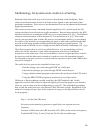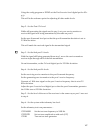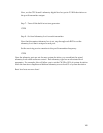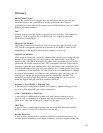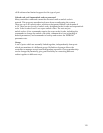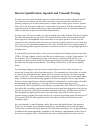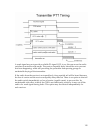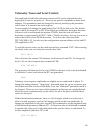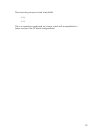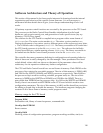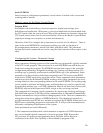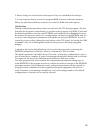114
Receive Qualification, Squelch and Transmit Timing
In most cases, the audio from the receiver is muted when no carrier is detected. In this
case, the receiver muting via the audio switches is not critical in the controller. It’s
primary purpose is to avoid passing noise or other audio which opens receiver squelch
when PL is not detected. In that case, if the audio is not muted, and the transmitters are
switched on due to either telemetry or input from another receiver, then the undesired
audio would also be passed to the linked transmitters.
In other cases, the receiver and/or receiver interface provides COR and PL detect signals,
but does not mute the receive audio. This means that the audio line from that receiver
has a high level of broadband noise when there is no signal present. In this case, the
switches in the controller radio card must provide the squelch function (even if only one
receiver is on, the transmitter remains on for a few seconds after the incoming carrier is
lost), and timing of the squelch operation is therefore critical to avoid passing high levels
of audio nose.
It is desirable for the controller to have some mechanism for dealing with transient false
COR or PL detect signals, which could be due to either noise, or short “kerchunking” of
the repeater. This is implemented in the controller by requiring COR and PL to be
present for a finite period of time before recognizing the received signal, switching on
the audio and keying the transmitters. This delay is referred to as the receive qualify
delay.
Several things happen when the received signal drops out. The audio switches are
turned off to mute the audio from that receiver. The transmit key down delay is started,
to turn off the transmitter after a delay of a few seconds. In the case of a local repeater
input (“remote”), a key up telemetry delay is started to transmit key up telemetry after a
delay of about a second. Incoming signals will often be marginal, due to rapid mobile
flutter or weak signals from a distant handheld. It is desirable to avoid cutting off audio,
transmitting key up telemetry, or cutting off the transmitters during a noisy
transmission. This is handled by introducing a second delay after COR or COR and PL is
lost before the controller recognizes that the received signal has dropped out. In the case
of a link receiver, in which the transmitter and receiver are in a fixed location, with the
link designed for high signal to noise, then this delay should be 0. In the case of a
repeater input, it needs to be some fraction of a second, depending upon the behavior of
the receiver COR, PL, and squelch circuits. This delay is referred to as the received
unqualify delay.
Key up telemetry is sent following a delay after received signal from a local repeater
drops out. An option is provided to abort the key up telemetry if the received signal
comes back on before the delay timeout. This prevents momentary loss of signal during
a mobile flutter from repeatedly sending key up telemetry, independent of the value of
the receive unqualify delay. Both delays may be set independently for each receiver.



